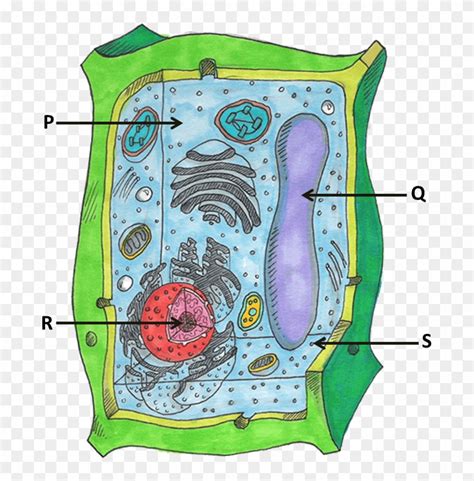Introduction:

Plants are essential to life on Earth. They provide us with food, oxygen, and shelter. In order to understand how plants work, it is important to know the different parts of a plant. This article will provide an overview of the major parts of a plant, as well as their functions.
Plant Structures
A plant’s structure consists of various organs, each with specialized functions that collectively contribute to the plant’s survival and growth. The main plant structures are:
- Roots: Roots are the underground part of a plant that anchors the plant in the ground and absorbs water and nutrients from the soil.
- Stem: The stem supports the leaves and flowers and transports water and nutrients from the roots to the rest of the plant.
- Leaves: Leaves are the food-producing organs of a plant. They contain chlorophyll, which absorbs sunlight and converts it into energy that the plant uses to make food.
- Flowers: Flowers are the reproductive organs of a plant. They produce pollen and ovules, which are necessary for fertilization.
- Fruits: Fruits are the mature ovaries of a flower. They contain seeds, which are the next generation of plants.
Roots:
Roots are essential for plant growth and survival. They perform the following functions:
- Anchor the plant in the ground
- Absorb water and nutrients from the soil
- Store food and energy
Types of Roots:
There are two main types of roots:
- Taproots: Taproots are long, thick roots that grow straight down into the ground. They are found in many plants, such as carrots and beets.
- Fibrous roots: Fibrous roots are thin, branching roots that spread out near the surface of the soil. They are found in many plants, such as grasses and trees.
Root Adaptations:
Roots can adapt to different environments. For example, some plants have roots that can grow in water, while others have roots that can store water in dry climates.
Stems:
Stems are an important part of a plant’s structure. They perform the following functions:
- Support the leaves and flowers
- Transport water and nutrients from the roots to the rest of the plant
- Store food and energy
Types of Stems:
There are two main types of stems:
- Woody stems: Woody stems are hard and strong. They are found in trees and shrubs.
- Herbaceous stems: Herbaceous stems are soft and green. They are found in plants such as grasses and flowers.
Stem Adaptations:
Stems can adapt to different environments. For example, some plants have stems that can store water, while others have stems that can climb up trees.
Leaves:
Leaves are the food-producing organs of a plant. They perform the following functions:
- Produce food through photosynthesis
- Transpire water vapor into the atmosphere
- Exchange gases with the atmosphere
Types of Leaves:
There are many different types of leaves. Some of the most common types of leaves include:
- Simple leaves: Simple leaves have a single blade.
- Compound leaves: Compound leaves have multiple blades.
- Broadleaf leaves: Broadleaf leaves are wide and flat.
- Needleleaf leaves: Needleleaf leaves are long and narrow.
Leaf Adaptations:
Leaves can adapt to different environments. For example, some plants have leaves that can store water, while others have leaves that can reflect sunlight.
Flowers:
Flowers are the reproductive organs of a plant. They perform the following functions:
- Produce pollen and ovules
- Attract pollinators
- Protect the developing seeds
Parts of a Flower:
The main parts of a flower include:
- Petals: Petals are the colorful leaves that attract pollinators.
- Sepals: Sepals are the green leaves that protect the flower bud.
- Stamens: Stamens are the male reproductive organs of a flower. They produce pollen.
- Pistil: The pistil is the female reproductive organ of a flower. It produces ovules.
Flower Adaptations:
Flowers can adapt to different environments. For example, some flowers bloom at night, while others bloom during the day.
Fruits:
Fruits are the mature ovaries of a flower. They perform the following functions:
- Protect the seeds
- Disperse the seeds
Types of Fruits:
There are many different types of fruits. Some of the most common types of fruits include:
- Berries: Berries are soft and fleshy. They contain multiple seeds.
- Drupes: Drupes are hard and fleshy. They contain a single seed.
- Pomes: Pomes are fleshy fruits that contain a core.
- Citrus fruits: Citrus fruits are fleshy fruits that contain multiple segments.
Fruit Adaptations:
Fruits can adapt to different environments. For example, some fruits are brightly colored to attract animals, while others are hard and dry to protect the seeds.
Conclusion:
The different parts of a plant work together to help the plant survive and grow. By understanding the functions of the different parts of a plant, we can better appreciate the beauty and complexity of the plant world.
